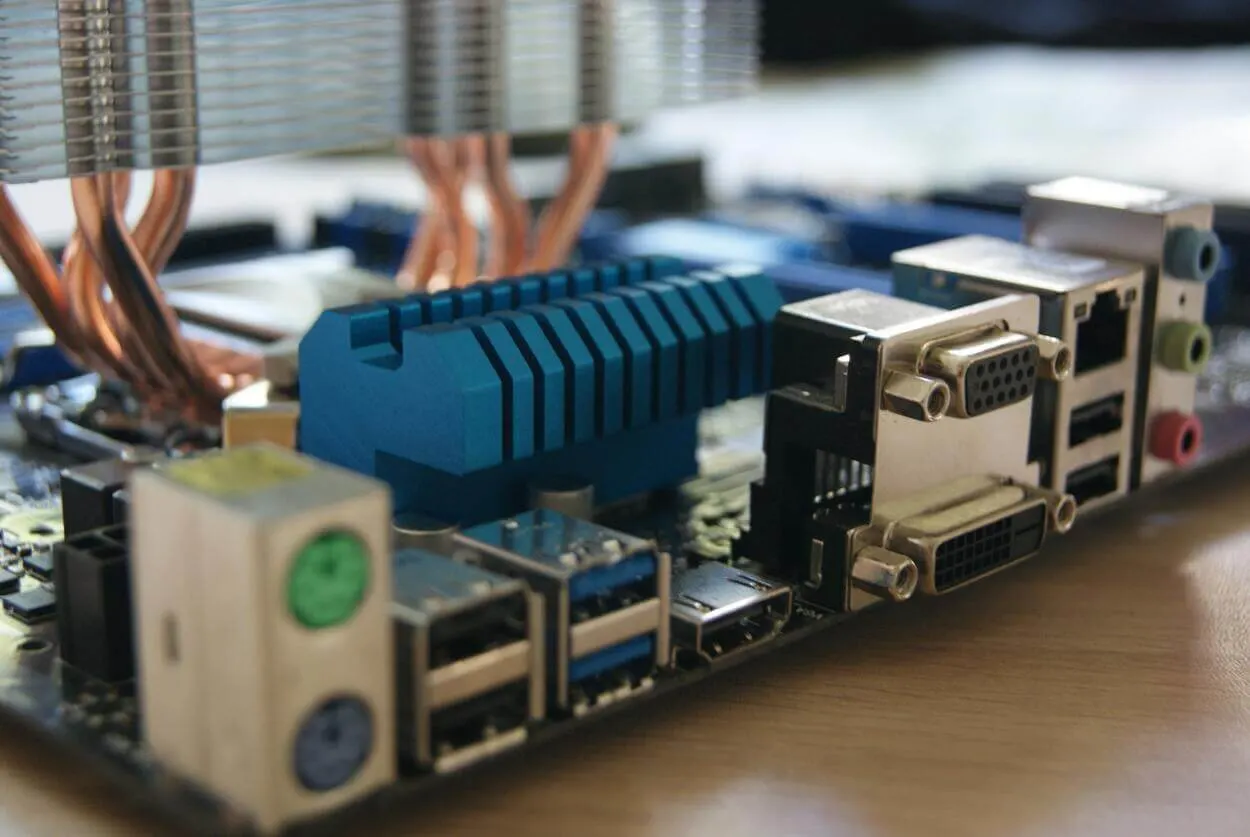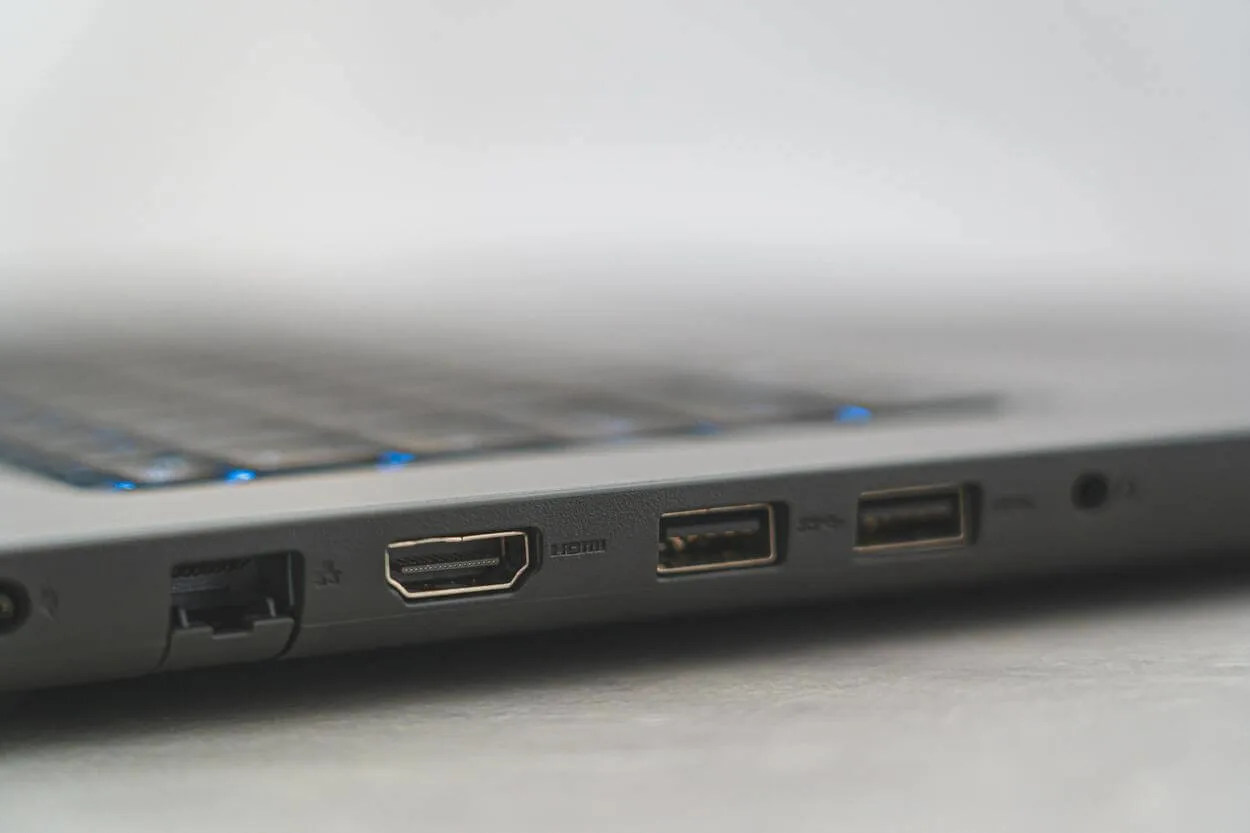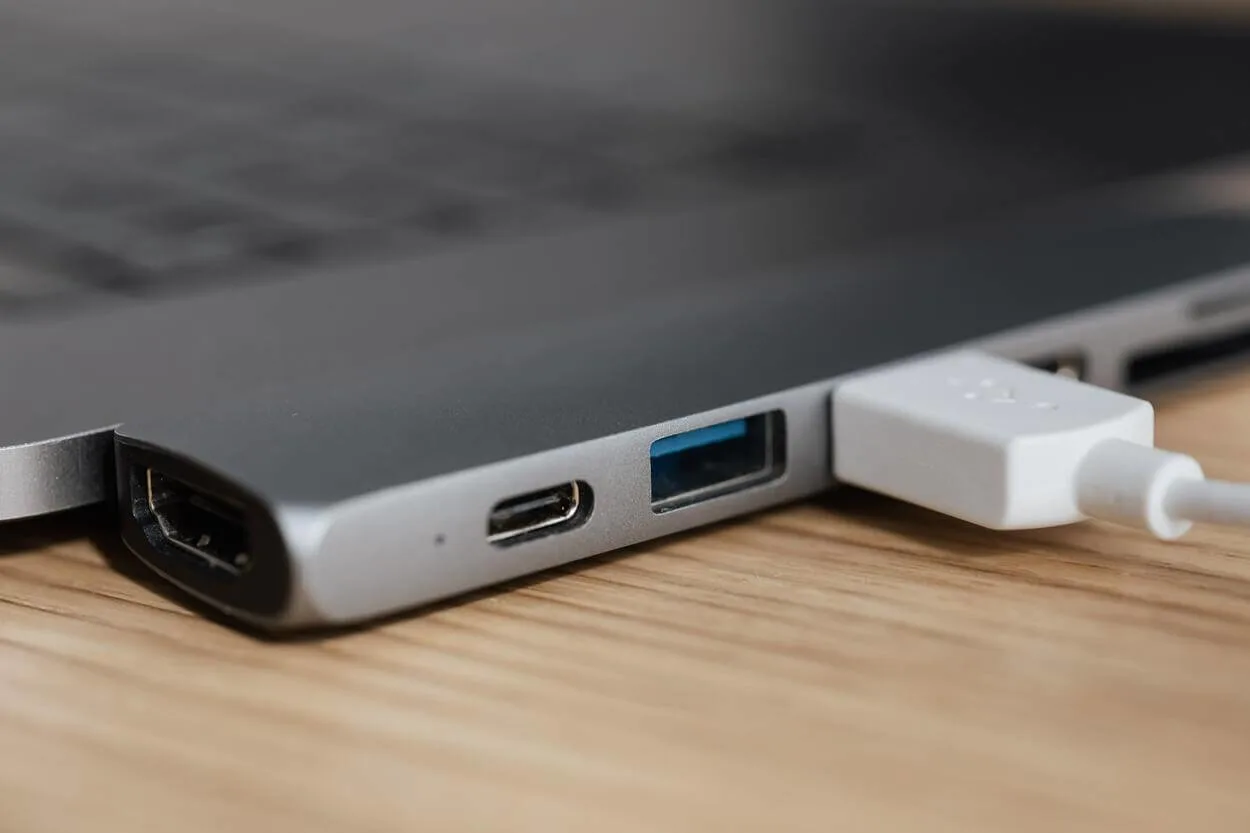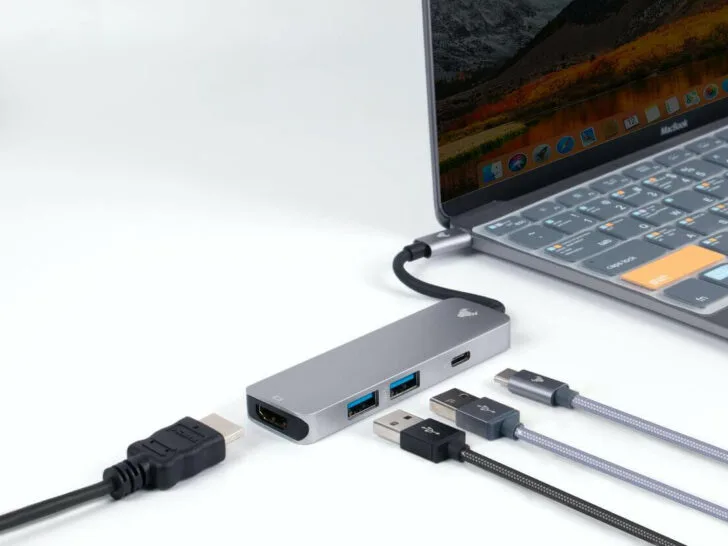Color coding is an essential standard for anyone who works with electronics or electricity. When dealing with your home’s wiring, you’d better know that black wires are “hot” and white wires are neutral – or you could be electrocuted. Similarly, there are conventions for color coding in electronics.
The USB ports you find on your laptop or desktop are colored differently. The color of a USB port is a general way to distinguish USB types, but it’s not a standard or recommended method. There’s no consistency or reliability in the color of USB ports across motherboards. Manufacturers of motherboards differ from each other.
The main difference between a blue and black USB port is that the black USB port is known as USB 2.0 and is a high-speed bus, whereas the blue USB port is known as USB 3.0 or 3.1 and is a super-speed bus. Blue USB ports are two to three times faster than black USB ports.
Let’s discuss these USB ports in detail.

What is a USB?
USB, or the universal bus service, is a standard interface for communicating between devices and hosts. Computers can communicate with peripherals and other devices through USB, a plug-and-play interface.
A commercial version of the Universal Serial Bus (version 1.0) was released in January 1996. After that, companies such as Intel, Compaq, Microsoft, and others quickly adopted this industry standard. You can find many USB-connected devices, including mice, keyboards, flash drives, and music players.
A USB connection is a cable or connector used to connect computers to various external devices. Nowadays, the use of USB ports is widespread.
The most common use of USB is to charge portable devices such as smartphones, eBook readers, and small tablets. Home improvement stores now sell outlets with USB ports installed, eliminating the need for a USB power adapter since USB charging has become so common.
What Does A Blue USB Port Mean?
The blue USB port is a 3. x USB port known as a super-speed bus. It’s the third specification of USB.
Blue USB Ports are typically USB 3.0 ports released in 2013. The USB 3.0 port is also known as the SuperSpeed (SS) USB port. A double S (i.e., SS) is near your CPU casing and laptop’s USB port. The theoretical maximum speed of USB 3.0 is 5.0 Gbps, which appears to be about ten times faster than the previous ones.
In practice, it doesn’t give 5 Gbps, but with the advancement of hardware technology, it will undoubtedly give 5 Gbps in the future. You can find this type of USB port in laptops and desktops.

What Does A Black USB Port Mean?
The black USB port is a 2. x USB port known as a Hi-speed bus. It’s commonly called type-B USB, introduced in 2000 as the second USB specification.
Among all USB ports, the black one is the most common. This USB port allows for much faster data transmission than USB 1. x. It is 40 times faster than USB 1. x and allows data transfer rates up to 480 Mbps. Hence, they are referred to as Hi-speed USBs.
Physically, it is backward compatible with USB 1.1, so you can connect USB 2. x devices to USB 1.1, and it will operate as before. In addition to all the features provided by the White USB port, it includes a few more. You can mostly find these USB ports on desktop computers.
Black USB port vs. Blue USB port: Know The Difference
The difference in the color of USB ports allows you to identify its version and differentiate between its user protocols. You can find USB ports in many colors, including red, yellow, orange, black, white, and blue.
The main difference between the black and blue USB ports is that the blue USB port is an advanced version of the initially designed ports and is much faster than the black USB port.
- The black USB port is the second specification, while the blue USB port is the third specification of a USB port.
- You can refer to the black USB port as a 2. x or 2.0 USB port. In contrast, the blue USB port is a 3. x or 3.0 USB port.
- The black USB port is a high-speed port compared to the blue one, which is the super speed port.
- The blue USB port is ten times faster than the black USB port.
- The charging power of the black USB port is 100mA, whereas the charging power of the blue port is equal to 900mA.
- The maximum transfer rate for the black USB port is up to 480 Mb/s, unlike the blue USB port, which has a maximum transfer rate of up to 5 Gb/s.
I’ll summarize these differences in a table for your better understanding.
| Black USB Port | Blue USB Port |
| 2.0 USB port. | 3.0 and 3.1 USB ports. |
| The second specification of USB ports. | Third specifications of USB ports. |
| Hi-speed bus port. | Super-speed bus port. |
| 100 mA charging power. | 900 mA charging power. |
| 480 Mbps speed. | 5 Gbps speed. |
You can watch this short video clip to understand the differences between both USB ports better.
Does The Color Of The USB or USB port Matter?
The color of the USB port gives you information about its specific function and other characteristic properties. So you must have a user manual or general information about the color coding of the USB ports. In this way, you’ll be able to use it properly.
Do Blue USB Ports Charge Phone Faster?
Generally, any USB port keeps the current to 500 mA for charging the phone. So it doesn’t matter whether it’s a black or blue USB port. The adapter used with the USB cable will toe down its current flow according to the required need of the phone.
However, you can generally assume that a blue USB port’s charging rate is pretty good compared to a white or black USB port.
What Are The Different Colors For USB Ports And Their Significance?
You can see the USB ports ranging from white to black and even random colors in different electronic devices. The most common USB port colors are;
- White; This color usually identifies a USB 1.0 port or connector.
- Black; Connectors or ports that are black are USB 2.0 Hi-Speed connectors or ports.
- Blue; color blue indicates a newer USB 3.0 SuperSpeed port or connector
- Teal; The new USB color chart includes teal for 3.1 SuperSpeed+ connectors.

Which USB Port Is Faster?
If you consider the latest addition to the series of USB ports, you can easily assume that the USB port is in teal color or that USB port 3.1 is the fastest port present so far in your electronic devices. It has a super speed of 10 Gbps.
Summary
- Color coding is standard in electronic devices to identify and specify similar-looking parts from each other. The same goes for the case of the USB ports, as you can find them in various colors. Two of these include black and blue color.
- The black color USB port is known as the 2.0 USB port. It’s a hi-speed bus with a data transferring speed of almost 480 Mb/s.
- The blue color port is known as a 3.0 or 3.1 USB port. Its mostly denoted by “SS,” showing its super speed of almost 5 Gb/s to 10 Gb/s.
Related Articles
Personal Finance vs. Financial Literacy (Discussion)
Gigabit vs. Gigabyte (Explained)
What Is the Difference Between A 2032 And A 2025 Battery? (Revealed)

